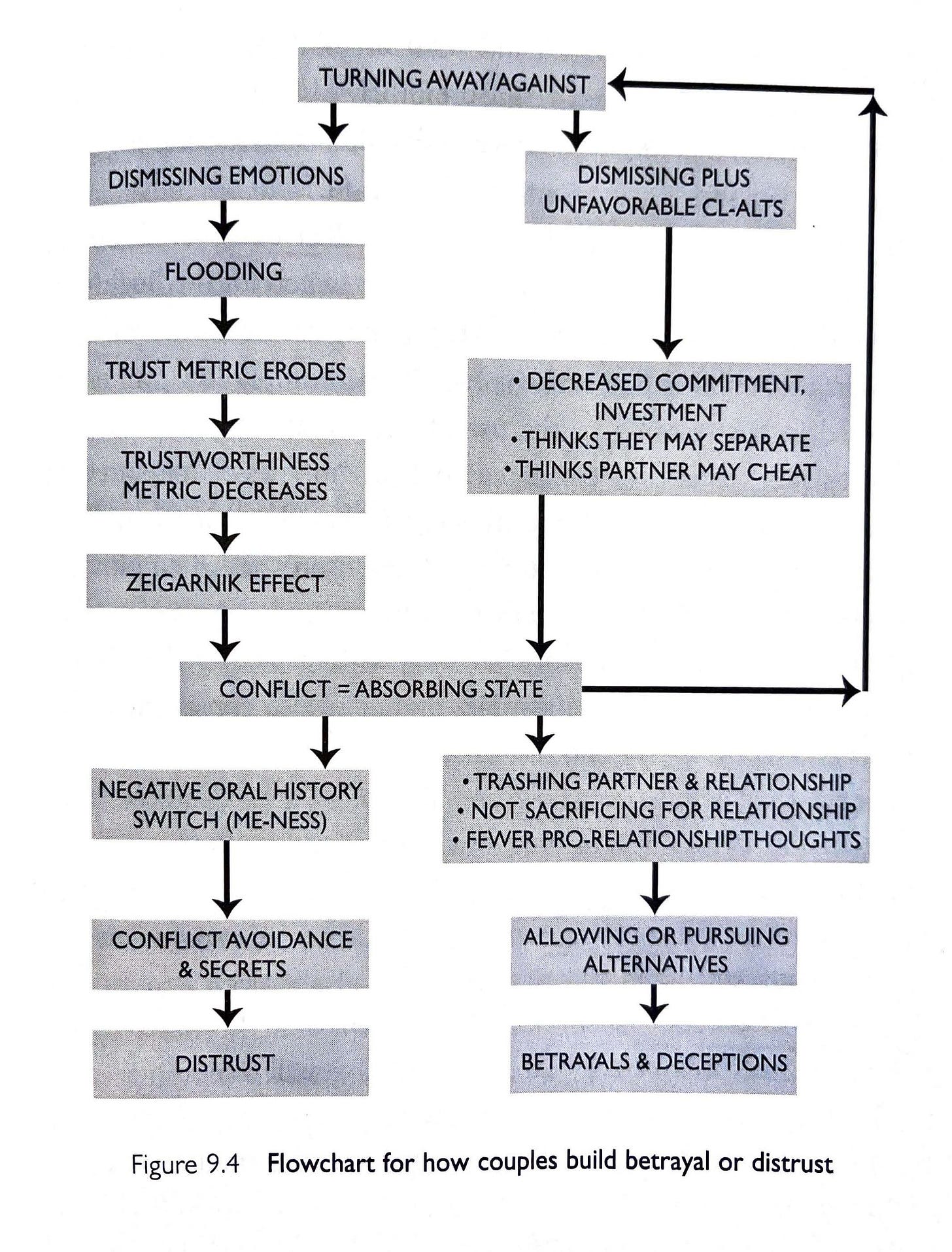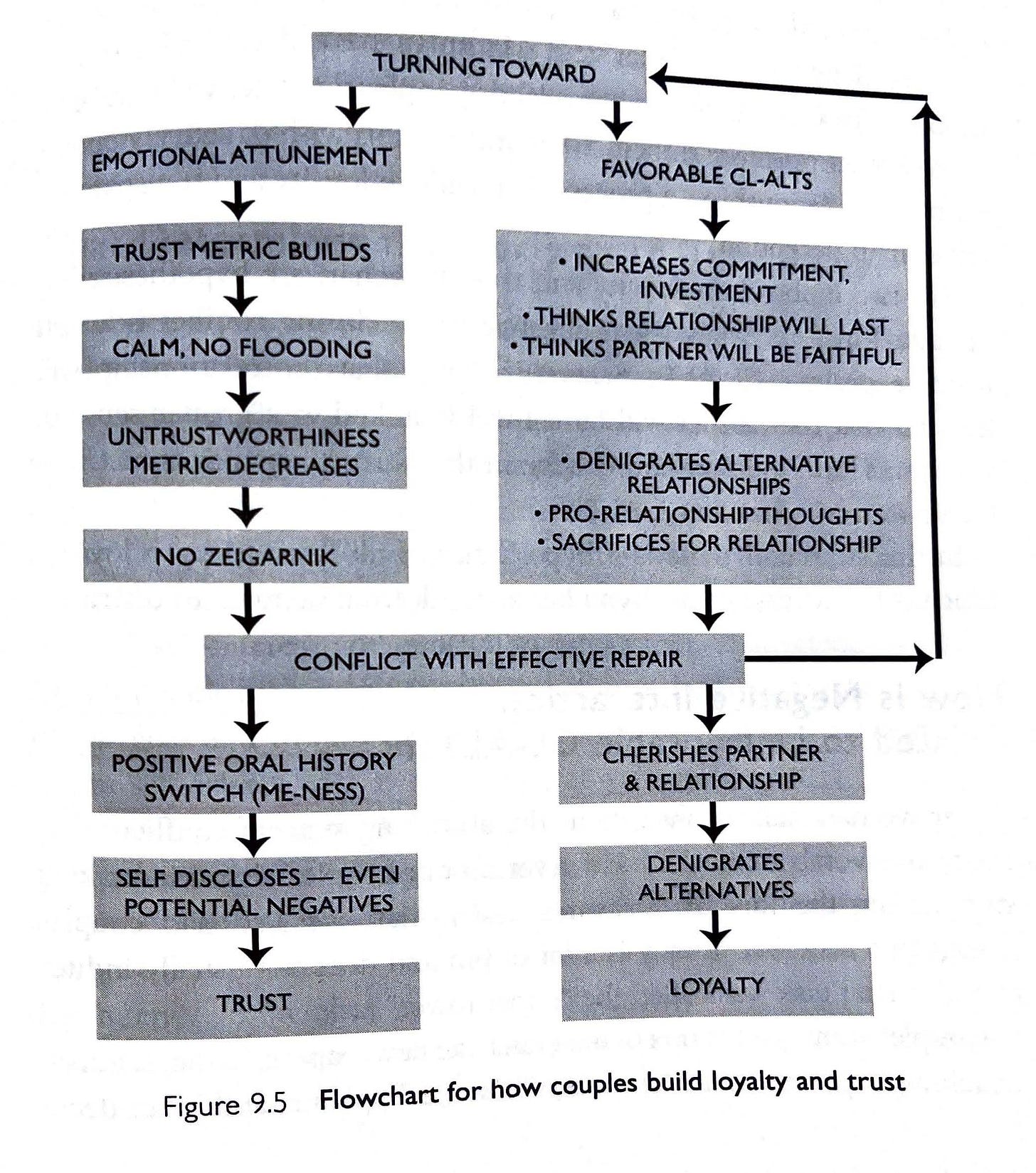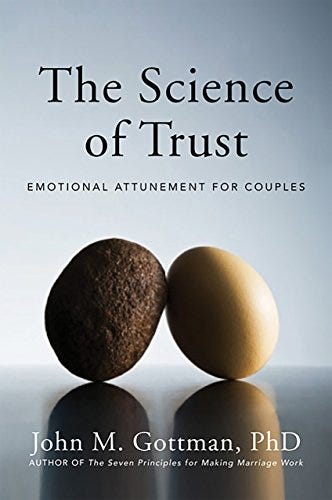It’s January. New year, new energy. For many it’s a chance to start something new. For others it’s a chance to repair what feels broken.
Often at the start of each year I receive a flood of counseling requests from couples wanting to address issues in their relationship. That’s because (to use clinical terms) relationships are really, really hard. They are complex and messy and full of overlapping histories that make changing established patterns extremely challenging.
The stories of my clients are all different. However, through our sessions I’ve come to witness a common thread that I’ve seen either bring relationships closer or cause the partnership to totally unravel.
That thread is trust. And we are the tailors, where our actions, emotions, and communication weave together a tapestry of safety or betrayal.
You may have seen this post pop up and think something like: Relationships. Trust. What could go wrong?’
I get where you are coming from.
This month we are looking at how one experiences trust in a relationship. Let me first say that this is a BIG topic and we are not going to be able to address all the nuances in this newsletter (or even in one book). Rather we are going to look at a thin slice of the dynamics of trust. From there I hope we can use that slice to understand some broader implications of how trust is experienced in a relationship.
So for our purposes today, I encourage you to think of trust as a force of momentum. Trust is in a state of perpetual flux. It is either growing or dwindling depending on a variety of personal and interpersonal relationship factors. When the relationship feels safe and secure, trust is growing. When there are decreased feelings of safety and security, trust is diminishing. If trust dwindles past a certain threshold it can - and will - lead to the relationship ending.
My goal for this newsletter is to consider:
The dynamics of trust and betrayal in a relationship.
How you can shift the momentum to improve trust and safety with your partner(s).
So let’s start with a simple reframe. It turns out that our brains are like plants. We grow in the direction of energy. Rather than what can go wrong, how about this:
Relationships. Trust. What can go right? (And stay right!)
Book Review: The Science of Trust
John Gottman's The Science of Trust is a dense and data-driven book focused on how trust is necessary for any healthy relationship.
To be blunt, this book is a dry read. There are several chapters dedicated to explaining the history of game theory. There are many pages of transcribed conversations that I did not find particularly useful. Unlike other books I’ve discussed through this newsletter, this is a difficult book for me to recommend. It is expensive and written for clinicians. However, I do see utility for anyone wanting more of the science behind how trust is created or destroyed in partnership. The specific chapters I found most useful were:
Chapter 4: The Physiology of Trust and Betrayal - This chapter does a good job at folding in the importance of emotional management in maintaining healthy communication. When our bodies are overwhelmed and feeling unsafe, it is impossible to experience trust.
Chapter 8: The Importance of Repairing Negativity During Conflict - I think this quote at the beginning of the chapter sums it up best. ‘Effective repair is probably the single most important process that a long-term relationship needs to survive and stay mutually satisfying’ (pg. 269). This chapter defines and lays out a path for effective repair.
Chapter 10: Healing From Betrayal - This chapter uses flowcharts as visual aids, which I found helpful. These flowcharts describe how betrayal happens, and also how to heal. We will discuss these flowcharts in the next sections. The first is how couples build betrayal. The second is how couples build trust.
How Couples Build Betrayal
A couple of quick clarifying definitions:
Flooding: Feelings of overwhelm. This is related to emotional management. When you are overwhelmed and feeling unsafe it’s impossible to manage emotions. You are trying to ‘get safe’ and will say or do whatever possible to ensure that outcome. Think ‘Fight, Flight, or Freeze’ response.
Zeigarnik Effect: ‘We have better recall for events that we have not completely processed’ (pg. 208). Often in relationships, conflict is not fully resolved and we are more likely to dwell on it. This can lead to rumination and add to the growing negative story about your partner.
Unfavorable CL-ALTS: ‘Comparison Level for Alternatives.’ Comparing your partner unfavorably with presumed superior alternatives. (Ex: After John and Donna get into a fight about cooking more, John thinks about Sue and how she probably wouldn’t care how much he cooks.)
Negative Oral History Switch: When discussing their relationship with others, a switch occurs from ‘We’ language to ‘I & me’ language, indicating an increased sense of separateness in the attachment to the relationship.

Okay. So, what do you think? It’s a lot, right? When I’ve shared this chart with others there’s been a lot of nodding heads and assertive taps on the page. ‘Yep. This happened this morning.’ I’ll ask something like ‘Then what?’ And the finger will circle back up to the top. Turning Away.
How couples build betrayal is, in most cases, a slow march towards a large action. For example, cheating on your partner don’t generally happen ‘out of the blue.’ Often it is the buildup of unaddressed resentment that cycles through arguments, leading to the increase of ‘turning away’ emotionally in the relationship.
Just like unaddressed chronic anxiety can lead to depression, unaddressed resentment can lead to a narrative that ‘my partner/mother/son/sibling/ best friend is untrustworthy.’
If that distrust builds enough momentum it can lead to irreversible betrayal, like an affair.
Other times there may be no overwhelming betrayal, but such a buildup of mistrust that it’s impossible to move forward with a relationship.
In either case, think of mistrust as momentum, and how if the balance tips decisively into the red there may be no path forward for repair.
So the question becomes - ‘How do we keep this from happening?’
Keep reading.
How Couples Build Trust
More clarifying definitions:
Emotional Attunement: This is tuning into the underlying emotions driving a behavior. It’s your partner asking for more help around the house and recognizing (and naming) that they feel overwhelmed and could use support.
Positive Oral History Switch (Me-ness): I hope Gottman will forgive me, but I believe there’s an error in here. It should read '(We-ness),’ that is, thinking of the relationship as a unit with shared beliefs, values, and goals in life.
Favorable CL-ALTS: Positive ‘Comparison Level for Alternatives.’ Comparing your partner favorably with presumed inferior alternatives. (Ex: Even after John and Donna get into a fight about cooking more, John recognizes that Donna is still the best person to meet his needs in the relationship.)

Here’s what I’ll say about this flowchart - I wish it was this simple. I wish we could be in the heat of an argument and say ‘PAUSE! Let’s pull out Gottman.’ And look at this little chart and say ‘Hm. Okay. So if I just stay calm here and don’t get overwhelmed then I’ll be able to turn towards you.’
This chart is not a silver bullet. Nothing is. That’s why there are untold numbers of books and articles hooking you with trendy taglines of ‘The Last Relationship Advice You’ll Ever Need!’ So think again of trust as a force of momentum and how can it build with time if you are also doing your inner work in tandem with the relationship work. In order to not ‘flood,’ we need to grow our capacity for managing our emotions. Emotional attunement takes practice in times of low stress. Experiencing conflict with effective repair takes an integration of skills.
But if these small changes are applied consistently during times of low-stress conflict (like negotiating who is picking up the kids from school today, or whose turn it is to empty the dishwasher) over a long period of time, then trust will build and sustain you during the big conflicts.
The Truth About (Mis)Trust
The truth is that trust is hard. And that’s because relationships are hard. When we have experienced betrayal in past relationships our nervous systems are primed for betrayal in our present ones. We develop mistrust in order to stay safe. Often this mistrust is an integral galvanizing force to leave an unhealthy relationship where the partner is unwilling to do the work alongside you. Mistrust is important. It is necessary.
But it can also impede growth and feelings of safety in a healthy relationship. So here are some questions you might ask yourself when evaluating trust in your meaningful relationships:
How do I experience trust in this relationship?
More specifically, what environmental factors help me feel more trusting in the moment?
When do I feel less trusting in the relationship?
What are there specific triggers that send ‘MISTRUST’ warning signals to my brain and body?
How have past relationships affected my ability to trust today?
How do I demonstrate trust to my partner?
What are the ways I can better practice ‘turning towards’ my partner to continue building trust momentum?
Monthly Mindfulness & Article
Because I’ve written a short novel for this month’s newsletter, I am combining and outsourcing our monthly mindfulness and article to a lovely list of “100 ways to slightly improve your life without really trying”, compiled by The Guardian. Each of these items offer moments of mindfulness - how we come back into ourselves, take a deep breath, and recognize that the only true reality is what is right in front of us.
Here are a few of my favorites:
#2 On the fence about a purchase? Wait 72 hours before you buy it.
#22 Laugh shamelessly at your own jokes.
#28 Always be willing to miss the next train.
#47 Take out your headphones when walking – listen to the world.
#57 Every so often, search your email for the word “unsubscribe” and then use it on as many as you can.
#71 Switch your phone off on holiday (or at least delete your work email app).
#85 Don’t get a pet/do get a pet.
#97 Listen to the albums you loved as a teenager.
Here’s what I believe: Life is hard sometimes. Little things can make it a little better. And you are worth every little thing put together.
Joe’s Corner
Oh sweet Joe. What is there to say about him this month? Well, for one thing, today is his birthday! The little guy is 3 years old.
And as he’s entering his third year, it’s clear that he has officially grown into his adult anxieties, which entails a level of hypervigilance at home that can leave both me and him exhausted at the end of a day. As we work through this new phase of our relationship together, I find myself benefitting from the reminders of why I love him and the value he adds to my life. The more I can love him the more capacity I have to manage his challenging behaviors.
I try to love Joe like Joe loves ball. Ball is life.
What Next?
That’s a wrap on this month! We will return to Trust in Relationships again down the line - there’s so much more to unpack and lots of great resources around this challenging subject.
But for right now, next month is just around the corner and the topic is TBD. If you have any topic suggestions or would like to connect, please send me an email at reese@livewildcollective.com or visit reesewells.com.
If you are interested in being a part of this newsletter, click the subscribe button below. I’ll be posting each month as an email delivered to your inbox.
✓
If you have people in your life who you think may be interested in reading this month’s post, consider sharing:
Otherwise you can check back in on the newsletter whenever it makes sense for you.
“Trust is built in very small moments, which I call 'sliding door' moments. In any interaction, there is a possibility of connecting with your partner or turning away from your partner. One such moment is not important, but if you're always choosing to turn away, then trust erodes in a relationship- very gradually, very slowly.” - John Gottman






